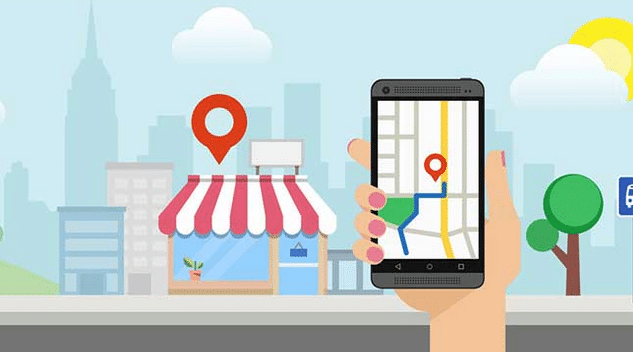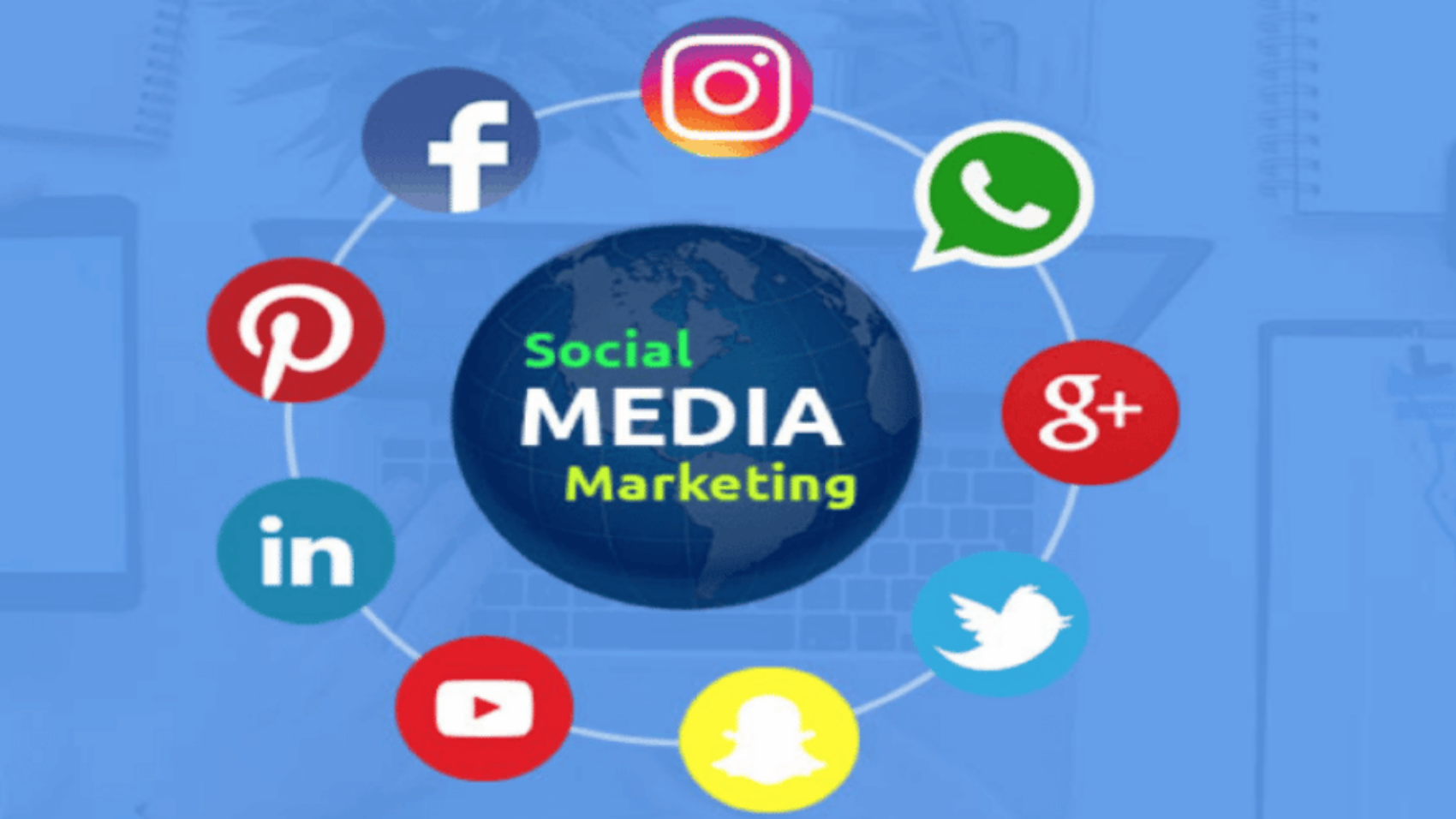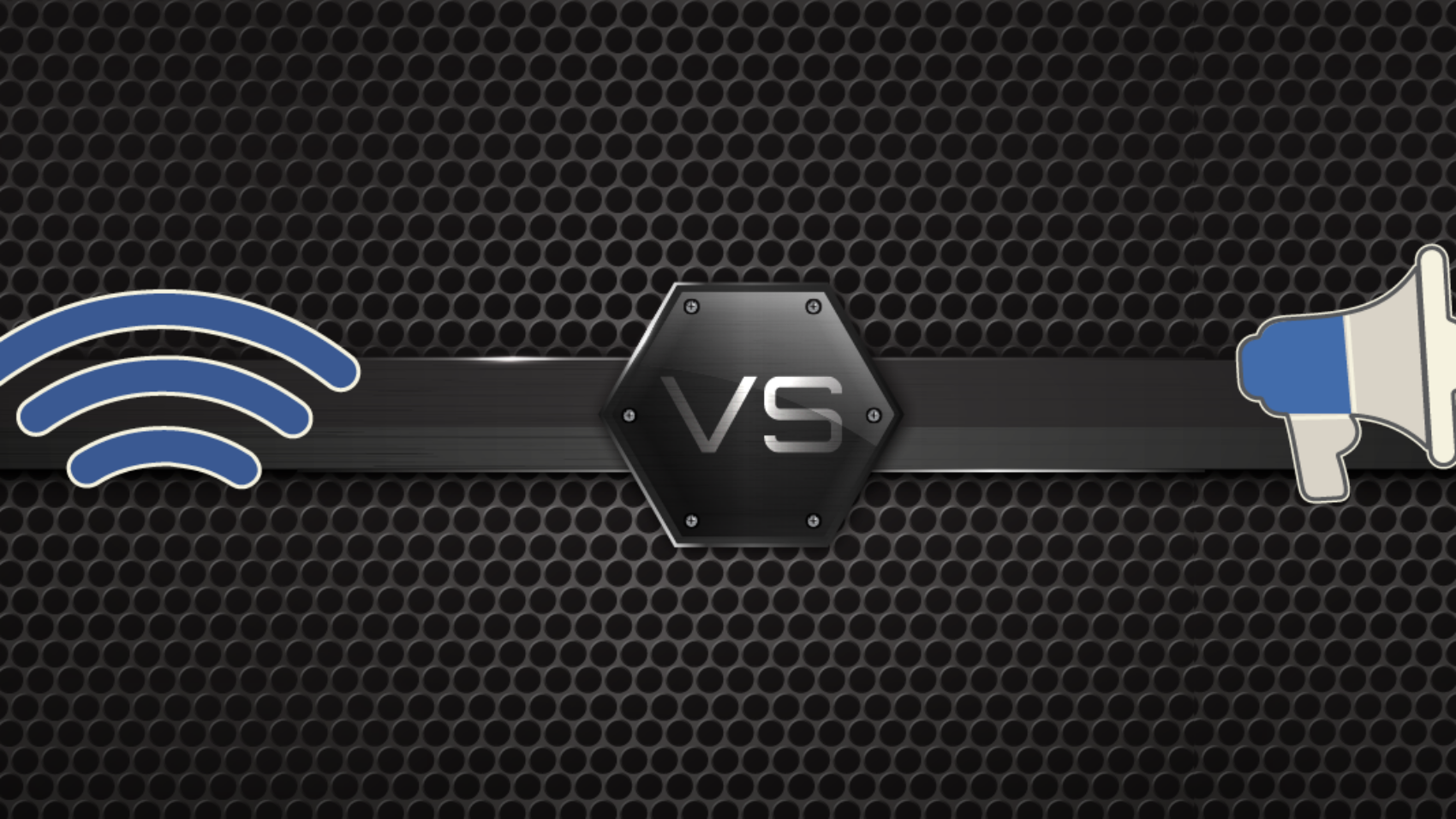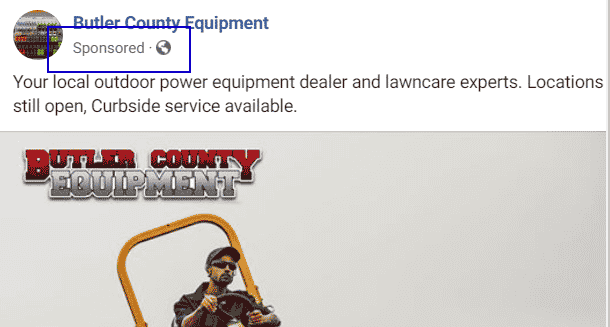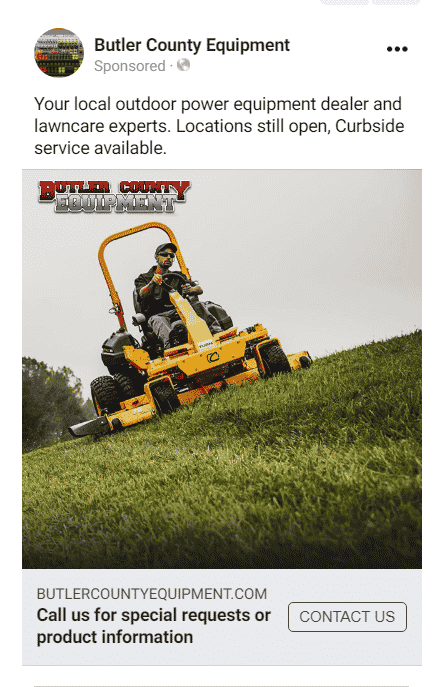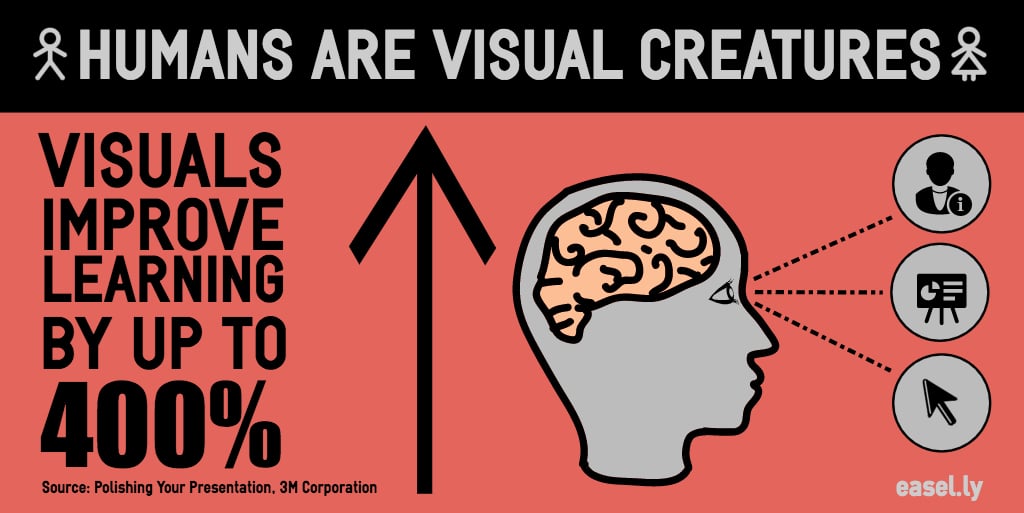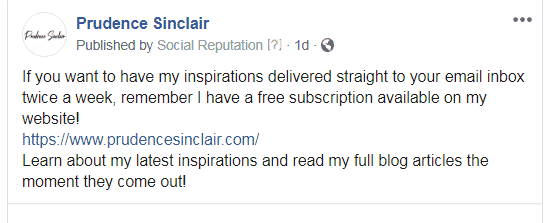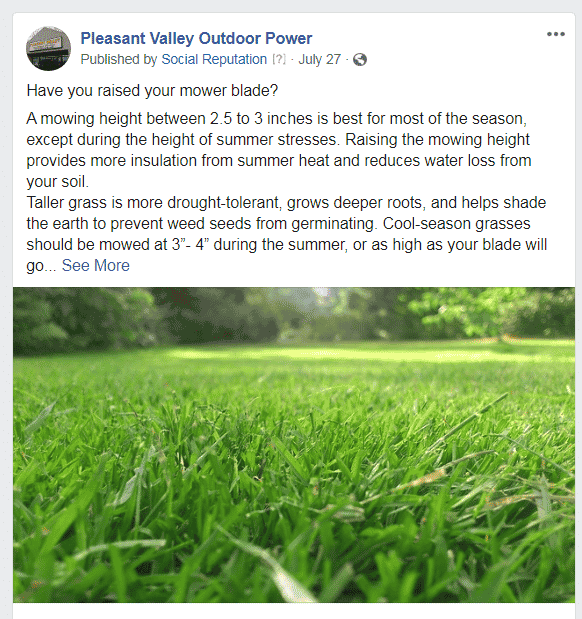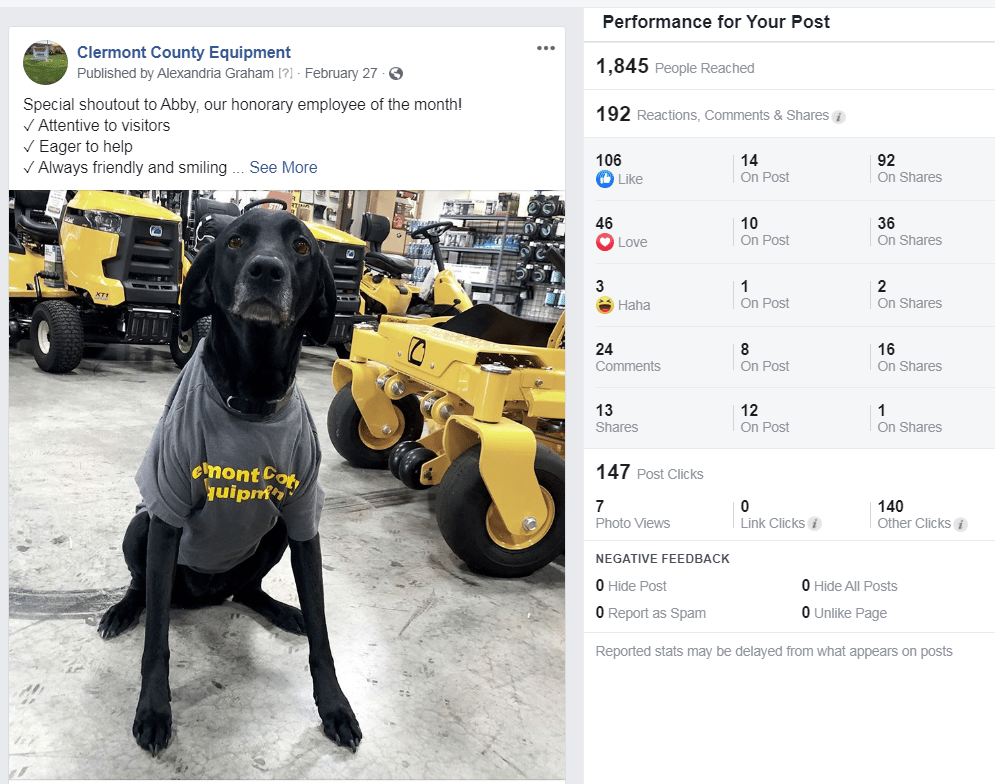Greetings and welcome to the exciting realm of digital marketing, where endless possibilities await to amplify your online presence. Today, we embark on a captivating journey that promises to revolutionize your business: the art of learning how to build your email list for highly effective email marketing. Get ready to unleash a unique and strategic approach that will help you cultivate remarkable results and nurture a loyal customer base!
In the age of ever-evolving digital landscapes, email marketing remains an invaluable tool for engaging with your target audience on a personal level. We believe in going beyond the conventional methods. We strive to inject a breath of fresh air into your marketing efforts, infusing wit, innovation and a touch of brilliance that will set you apart from the competition.
Sowing the Seeds – Strategies to Build Your Email List
Captivating Subscribers: Crafting Irresistible Incentives for Lawnmower & Tractor Dealerships
In a world inundated with promotions, it’s crucial for lawnmower and tractor dealerships to stand out from the crowd. To attract potential subscribers and build a robust email list, it’s no longer sufficient to offer generic discounts. Instead, it’s time to think outside the box and provide exclusive incentives that genuinely excite your audience. By going above and beyond their expectations, you can captivate their attention and entice them to join your exclusive email list. In this section, we will explore the art of crafting irresistible incentives that ignite curiosity and foster loyalty so that you can learn how to build your email list.
In today’s competitive landscape, generic discounts alone may not be enough to capture the attention of your potential subscribers. To truly stand out, consider offering a range of enticing incentives that go beyond their expectations. Here’s an example of how a lawnmower and tractor dealership could craft truly irresistible incentives:
Imagine enticing your potential subscribers with a unique VIP experience. Offer them an exclusive opportunity to test drive limited-edition lawnmowers and tractors before they hit the market. Picture this: “Join our Inner Circle and be the first to experience our highly anticipated ‘Green Thunder’ lawnmower! As a VIP member, you’ll get an exclusive invitation to our private event, where you can take the ‘Green Thunder’ for a spin and witness its unmatched power. Plus, enjoy complimentary refreshments and personalized consultations with our expert team. Don’t miss this once-in-a-lifetime opportunity to be at the forefront of cutting-edge lawn care technology!”
In this example, the lawnmower and tractor dealership goes beyond monetary benefits and taps into the desire for exclusive experiences. By offering a VIP event and early access to new models, they create a sense of excitement, exclusivity, and anticipation. This type of incentive not only captures the attention of potential subscribers but also fosters a strong sense of loyalty and engagement.
When crafting your irresistible incentives, consider the unique qualities of your dealership and the desires of your target audience. Think about rewards, experiences, or access that would genuinely excite and entice them. Whether it’s limited-edition models, exclusive discounts, VIP events, or personalized consultations, ensure that your incentives align with your brand’s values and resonate with your audience’s aspirations.
Cultivate Engaging Content
Building an email list is not just about gathering contacts; it’s about nurturing a relationship with your subscribers through valuable and engaging content. Your email list is like a well-tended garden that thrives on content that resonates with your audience’s aspirations and feeds their hunger for knowledge. As a lawnmower and tractor dealership, you have a unique opportunity to become the beacon of expertise that your subscribers turn to when seeking wisdom on mowing techniques, trimming strategies, or transforming their outdoor spaces.
To cultivate a loyal following, it’s essential to provide your subscribers with expert advice, comprehensive seasonal lawn care guides and innovative ideas that inspire their green thumb. Your content should go beyond basic tips and offer in-depth insights into the world of lawn care. Here are some ways to create valuable and engaging content for your email list:
- Expert Advice: Share your years of experience and expertise by providing practical tips and tricks that help your subscribers achieve the best results. Whether it’s the proper mowing height, the right time to fertilize, or troubleshooting common lawn problems, offer actionable advice that they can implement immediately.
- Seasonal Lawn Care Guides: Develop comprehensive guides that cater to the specific needs of each season. Offer guidance on preparing the lawn for winter, spring rejuvenation tips, summer maintenance essentials, and fall clean-up strategies. By providing timely and relevant information, you position yourself as a reliable resource throughout the year.
- Innovative Ideas: Don’t be afraid to think outside the box and present unique and creative ideas for lawn and garden transformations. Showcase innovative design concepts, landscaping trends, or DIY projects that inspire your subscribers to elevate their outdoor spaces. Provide step-by-step instructions, visuals, and before-and-after examples to make it easy for them to implement your ideas.
- Answer Common Questions: Take note of the frequently asked questions from your customers and address them in your email content. By proactively answering their queries, you demonstrate your expertise and establish trust. Consider hosting a “Lawn Lovers’ Q&A” segment where you address their specific concerns and provide valuable insights.
- Inspire Action: Motivate your subscribers to take action by highlighting the benefits of proper lawn care and the impact it can have on their overall quality of life. Emphasize the joy, pride, and sense of accomplishment that comes with maintaining a beautiful and healthy lawn. Use compelling storytelling and visuals to inspire them to put your advice into practice.
Remember, consistency is key when delivering valuable and relevant content to your email list. Develop a content calendar to ensure regular communication and stay top of mind with your subscribers. Building an email list is not just about sending promotional messages; it’s about building a relationship based on trust, providing value, and nurturing their passion for lawn care. By doing so, you’ll establish yourself as a trusted source of information and ignite their enthusiasm for creating and maintaining their dream outdoor spaces.
Harness the Power of Social Media
In today’s digital landscape, social media platforms hold immense influence over consumer behavior and decision-making. As a lawnmower and tractor dealership looking to grow your email list, it’s crucial to leverage the reach and engagement of these platforms. Social media provides a unique opportunity to engage your followers, showcase your brand’s personality, and establish a strong online presence.
To maximize your email list growth, consider the following strategies for leveraging social media:
- Captivating Posts: Create visually appealing and captivating posts that catch the attention of your audience. Use high-quality images, videos, and graphics that showcase your lawnmowers and tractors in action. Craft compelling captions that not only entertain but also highlight the value your email list provides. For example, you can tease exclusive offers, share snippets of valuable content, or invite followers to join your email list for a chance to win exciting prizes.
- Sneak Peeks and Teasers: Use social media to provide sneak peeks and teasers of the content and offers your email subscribers receive. Create intrigue and curiosity by sharing snippets or behind-the-scenes glimpses of upcoming newsletters, seasonal lawn care tips, or exclusive promotions. Encourage your followers to join your email list to access the full range of benefits and stay in the loop.
- Contests and Giveaways: Organize contests and giveaways on social media to incentivize people to join your email list. For example, you can run a contest where participants need to sign up for your email list to enter and have a chance to win a top-of-the-line lawnmower or tractor. Promote the contest across your social media channels to reach a wider audience and generate excitement.
- Influencer Collaborations: Partner with relevant influencers or local gardening enthusiasts who have a strong social media presence. Collaborate on content that promotes the benefits of joining your email list, such as sharing their personal lawn care tips or highlighting their experience with your lawnmowers or tractors. Influencer collaborations can help expand your reach and attract new subscribers who trust and value their recommendations.
- Social Media Advertising: Utilize social media advertising platforms to target specific demographics and promote your email list. Create eye-catching ads that emphasize the benefits of joining, such as receiving exclusive discounts, access to valuable content, or being part of a community of lawn care enthusiasts. Set specific targeting parameters to reach your ideal audience and track the performance of your ads to optimize your campaign.
By strategically using social media to promote your email list, you can attract a wider audience, engage with potential customers, and convert them into loyal subscribers. Remember to regularly evaluate your social media strategy, track your engagement and conversion metrics, and make adjustments as needed to ensure maximum impact.
Watering Your Email Garden – What to Write About, Part 2
Monthly Lawn Care Digest
As guardians of the green, you possess a wealth of expertise that can provide your subscribers with invaluable insights into the world of lawn care. One effective way to engage your audience and keep them eagerly anticipating your emails is by crafting a monthly lawn care digest. This digest serves as a comprehensive resource that equips your subscribers with a curated collection of tips, tricks, and trends in the realm of lawn care.
Consider covering a wide range of topics that appeal to the diverse interests and needs of your subscribers. Start by addressing the fundamentals, such as proper mowing techniques, fertilization schedules, and weed control strategies. Dive deeper into specific areas, such as irrigation system maintenance, soil health management, or disease prevention.
To keep your readers captivated, go beyond the basics and explore emerging technologies and innovative design ideas. Discuss the latest advancements in robotic mowers, smart sprinkler systems, or eco-friendly lawn care practices. Share success stories from customers who have implemented these technologies and witnessed remarkable transformations in their lawns.
Additionally, consider including a section dedicated to sustainable landscaping. Explore topics like native plant selection, water conservation methods, or creating pollinator-friendly habitats. Offer insights into the benefits of organic fertilizers and natural pest control alternatives. By highlighting the importance of sustainable practices, you position your dealership as a champion of environmental stewardship.
To add an extra touch of engagement, consider incorporating interactive elements into your monthly digest. Include quizzes, polls, or contests that allow your subscribers to test their knowledge or showcase their own lawn care achievements. Encourage them to share their results or participate in discussions, fostering a sense of community and interaction among your subscribers.
Remember to keep the tone of your monthly lawn care digest informative, yet accessible. Avoid overwhelming your readers with technical jargon and strive to simplify complex concepts. Use visuals such as diagrams, infographics, or before-and-after photos to enhance understanding and make the content more visually appealing.
By consistently delivering a monthly lawn care digest packed with valuable insights, you position yourself as a trusted source of knowledge and establish a strong bond with your subscribers. They will eagerly anticipate each edition, relying on your expertise to guide them in their lawn care journey. As your subscribers gain confidence and achieve success, their loyalty to your dealership will blossom.
Spotlight Customer Success Stories
Your customers’ accomplishments are powerful testaments to the exceptional quality and performance of your lawnmowers and tractors. By shining a spotlight on their triumphs, you have the opportunity to inspire and motivate your subscribers to transform their own lawns into awe-inspiring works of art.
Create a dedicated section within your email communications to share success stories from satisfied customers. These testimonials provide social proof and serve as real-life examples of the transformative power of your products. Highlight the challenges your customers faced before discovering your lawnmowers or tractors, emphasizing the specific features or benefits that made a significant difference in their lawn care journey.
Paint a vivid picture of their experiences, showcasing how their lawns underwent remarkable transformations. Share captivating before-and-after photos, illustrating the remarkable progress achieved through their dedication and the assistance of your high-quality equipment. Include quotes and anecdotes from these customers, allowing their authentic voices to shine through and resonate with your subscribers.
Consider featuring a diverse range of customer stories to cater to different interests and demographics. Showcase the meticulous homeowner who achieved a perfectly manicured lawn worthy of a magazine cover. Share the story of the busy professional who saved time and effort with your efficient zero-turn mower, reclaiming their weekends to spend with family and friends. Highlight the passionate gardener who used your tractor to effortlessly tackle large-scale landscaping projects, turning their backyard into a lush oasis.
Beyond the visual and narrative aspects, it’s essential to highlight the tangible benefits your customers gained from using your products. Discuss the time saved, the ease of use, and the overall improvement in the health and appearance of their lawns. These testimonials should clearly articulate the value your lawnmowers and tractors brought to their lives, reinforcing the trust and confidence your subscribers have in your brand.
To further engage your subscribers, consider incorporating interactive elements in your testimonials section. Encourage customers to share their own success stories and transformations, creating a sense of community and fostering a platform for customer-to-customer interaction. Include a call-to-action for readers to submit their stories, photos, or videos for a chance to be featured in future email communications or on your website.
By sharing these inspiring success stories, you ignite the desire within your subscribers to embark on their own landscaping journeys. The accomplishments of your customers become a source of inspiration and motivation, creating a strong emotional connection between your brand and your audience. As a result, your subscribers will view your lawnmowers and tractors as the means to achieve their own lawn care dreams.
You will need to have reviews and testimonials to pull from, so it is essential to have a review generation process in place.
Exclusive Offers & Previews
Your email subscribers are not just ordinary contacts; they are your trusted inner circle, your most valued partners in the pursuit of greener pastures. To nurture this relationship and cultivate a sense of exclusivity, offer them a range of exclusive offers and previews that make them feel appreciated and privileged.
One way to reward your subscribers is by providing them with exclusive discounts. Offer special pricing or limited-time promotions that are only available to those on your email list. This not only incentivizes new subscribers to join but also reinforces the value of being a part of your exclusive community. Consider offering tiered discounts based on subscriber loyalty or purchase history, allowing long-time supporters to enjoy even greater savings.
In addition to discounts, give your subscribers early access to new product launches. Provide them with a sneak peek into upcoming lawnmower and tractor models before they are available to the general public. This gives your subscribers a sense of being on the cutting edge, with the opportunity to be the first to experience the latest advancements in lawn care technology.
When unveiling new products or models, create an element of excitement and anticipation. Tease your subscribers with teaser campaigns, countdowns, or behind-the-scenes glimpses, building anticipation and generating buzz. Consider hosting virtual launch events exclusively for your email subscribers, where they can interact with your experts, ask questions, and gain deeper insights into the features and benefits of the new offerings.
Beyond discounts and previews, consider offering exclusive perks or benefits that are only available to your email subscribers. This could include freebies, extended warranties, or personalized customer support. By providing these additional privileges, you reinforce the value of being part of your exclusive insider’s circle, deepening the sense of loyalty and appreciation among your subscribers.
To effectively communicate these exclusive offers and previews, ensure that your email communications are tailored and personalized. Segment your subscriber list based on their preferences, purchase history, or demographics, and deliver targeted messages that speak directly to their needs and interests. Personalization adds a level of relevance and makes your subscribers feel truly valued.
Encourage your subscribers to share their exclusive offers and experiences with their networks, creating a sense of exclusivity and word-of-mouth promotion for your dealership. Consider implementing referral programs that reward both the referrer and the referred, further amplifying the sense of community within your subscriber base.
By providing exclusive offers and previews to your email subscribers, you create a unique sense of loyalty, anticipation, and privilege. Your subscribers will feel valued and appreciated, fostering long-term relationships and increasing their engagement with your dealership. This loyalty translates into repeat business, positive word-of-mouth, and a thriving email list that continues to grow and flourish.
Cultivating Success: The Power of Email Marketing for Lawnmower & Tractor Dealerships
In the vast digital landscape where the grass is always greener, lawnmower and tractor dealerships must harness the power of email marketing to cultivate success. Throughout this journey, we have explored the strategies and tactics to build an email list and the captivating content to nourish it. We have also delved into the importance of showcasing customer successes and offering exclusive offers to foster loyalty and anticipation.
By offering irresistible incentives, cultivating engaging content, and harnessing the power of social media, you can build your email list. This list becomes a gateway to connect with your audience, share valuable knowledge, and drive conversions.
Once you have grown your email garden, it’s time to water it with purposeful content. Provide your subscribers with a monthly lawn care digest, sharing tips, tricks, and trends to inspire their green thumb. Unleash the power of testimonials, shining a spotlight on customer accomplishments that testify to the exceptional quality of your products. Share success stories that ignite the desire within your subscribers to embark on their own landscaping journeys.
Furthermore, treat your email subscribers as the VIPs they are. Offer them exclusive discounts, early access to new product launches, and sneak peeks into upcoming models. Make them feel appreciated and privileged, creating a sense of anticipation and loyalty that is unmatched.
As we conclude this journey, it is crucial to emphasize the importance of consistently nurturing your email list. Regularly analyze and refine your email marketing strategies, keeping a pulse on the evolving needs and preferences of your subscribers. Deliver personalized and relevant content that speaks directly to their aspirations and challenges.
Remember, your email list is a precious asset that allows you to cultivate lasting relationships with your audience. By sowing the seeds of value, nurturing your email garden with captivating content, and offering exclusive benefits, you will witness your conversions blossom, and your dealership thrive.
So, hop on board the digital tractor and let Dealers Digital Marketing help you navigate the vast landscape of email marketing. Together, we’ll make sure the grass is greener in their inbox! Contact us today to explore how we can maximize your online efforts and drive exceptional results.
Looking to automate your email marketing? DealerAmp can help you automate more than just your email marketing. Business listing management, Review generation and Social Media can all be handled through DealerAmp. DealerAmp was built with dealers for dealers and can help you take your digital marketing to the next level! Contact us to learn more!














